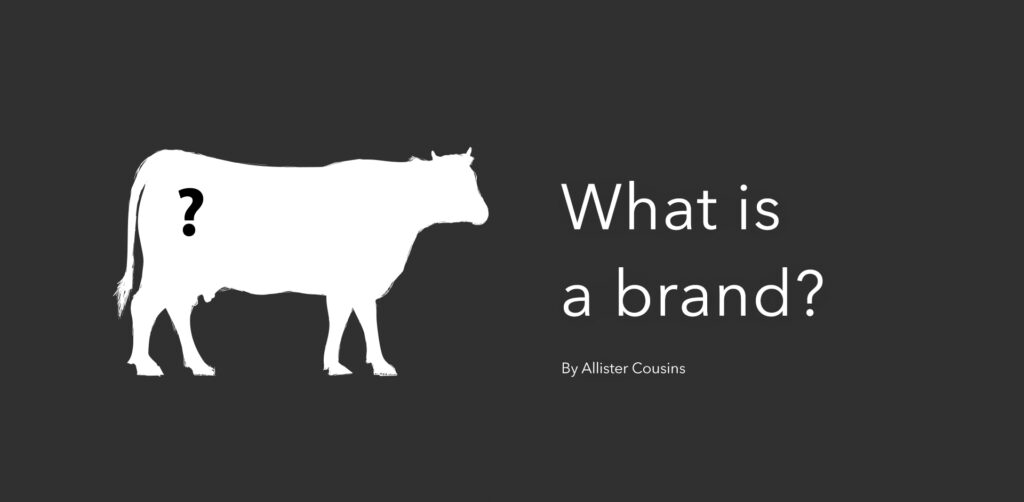A brand is not a new invention, and it’s more than that mark burned onto the butt of a cow.
Belonging
Humans want to belong. We yearn for connection and association. The existence of the brand is almost as old as the human race itself. In fact, the very minute those first few people said they belonged to something like a family, or tribe… a brand was born in the form of a name or symbol that united and represented them, and had a reputation linked to it.
We get excited when we find out someone else loves the brand we love. It’s a similar feeling to finding out you both know the same person, or are from the same place, even somewhat like discovering that you’re related to one another in some shape or form. People feel a connection to a brand and a connection with people who feel the same about it. Why? Every brand has values, a philosophy, a story and a culture – whether purposefully developed or not, just like a person, or tribe.
People buying into the brand feel they are buying more than the product and are somehow now connected with the person or people behind it and fellow devotees. Those who favour one brand often have a negative perception of its competitors. It’s why sports teams have become some of the most powerful brands in the world.
A brand is an entity, something that exists apart from any one thing. While a company is a legal entity, and a business a transactional entity, a brand is an entity that exists in the realm of emotion, perception and belief.
Since the 19th century, as marketing began to be seen as a discipline, the term ‘brand’ has been used primarily in a business context, which is why political parties, nations, societies, institutions, and religious groups don’t immediately strike us as brands, but they are. The same can be said for people, and not just celebrities, sports stars, public figures and politicians, but business people, influencers and well just about anyone who actively works on their ‘personal brand’ to form people’s perception of them that they can leverage in some shape or form.
Symbolism
Back to the cow butts. ‘Brand’ (Origin: Old Norse), means ‘burn’. A herdsman long, long ago, and far, far away, thought to himself, “These cattle are mine. How about I burn an identifiable mark on them so that someone else doesn’t steal them?” Fair, and painful, enough. And so, he smoke-signalled his graphic designer niece and asked her for a quick logo in exchange for the great exposure she’ll get with her logo on cow butts… just kidding – graphic designer inside joke. We can imagine this came about not too long after cows were a thing. This is branding, a verb, and often infers slapping a logo on every piece of the business’s property. It is not a brand, a noun, which is a thing in and of itself, an entity as mentioned already. Brand building is then the process of building a thing, and not marking property or goods.
How did Branding evolve into Brand Building? At first, people branded their stock and stuff with marks, symbols, logos, logograms, crests, emblems, signets, hallmarks, coats of arms, icons, insignia etc. (the abundant list of names given to such a device tells us it’s a serious business), so that they could be identified. As time went by, the purpose of branding things evolved from identifying one’s own property to something that could be identified by others to assure them of the source, authenticity and quality. So much so that in 1266 the first trademark legislation was passed by King Henry III that required all bakers to use a distinctive mark for the bread they sold. By the 1800s laws were in place to criminalise the imitation of someone else’s trade mark with the intent to defraud. And so trademarks began to bear greater and greater significance, moving from being mere identifiers to symbols that referred to the maker’s reputation, values, philosophy and ultimately their story.
Belief
A brand is not the product, business or entity itself. It’s what people believe about it – which is built up each and every time people come in contact with it or are told something about it.
This belief is in a story that develops in a person’s mind and heart, brick by brick, or rather thought by thought and feeling by feeling. Through every encounter with an expression of it, the brand is built. That’s why it’s referred to as Brand Building. The building work is not just branding physical and digital property, but the purposeful, strategic construction that takes place in people’s minds and hearts.
How well and uniquely the brand positions itself in the mind of its audience is what determines its success. While marketing is telling people about something to convince them of it, a brand is, as Marty Neumeier so beautifully illustrates, the conviction, belief or perception a person has of something.
So… what is a brand?
A brand is what people believe about a group, organisation, business, product, or personality.
If you’re looking for a formula then here it is:
A brand equals the average belief about an entity held by its total audience (target market + customers + employees + suppliers + competitors) built by each audience member’s every interaction with the business over time.
Legacy
The power of a brand lies in the fact that it lives in the collective consciousness of a group of people. Even if built around the reputation of a single person initially, a brand grows greater than any one person and, as a result, inspires purpose in those who work for it.
It exists, not only across space but also time. A brand perpetuates a legacy and continues to tell its story which means it lives on long after its founder is no more.

